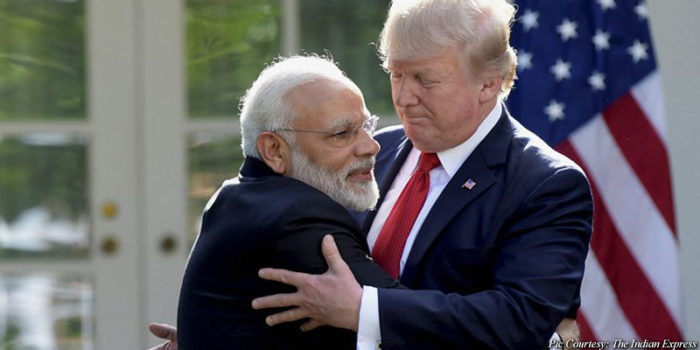Introduction to the current state of the UK fashion industry
The UK fashion industry is at a pivotal crossroads. Once hailed as a global trendsetter, it now faces an urgent crisis that threatens to undermine its very foundations. The workforce that once fueled this vibrant sector is aging and dwindling, while the complex implications of Brexit have only deepened the skills shortage in manufacturing. As designers innovate and brands strive to capture attention on international runways, they are met with a stark reality — a lack of skilled workers ready to bring those visions to life. This precarious situation not only affects businesses but also poses challenges for future generations hoping to carve out their place in this dynamic field. Understanding these issues isn’t just important; it’s essential for anyone passionate about fashion’s future in the UK and beyond.
Aging workforce and its impact on the industry
The aging workforce in the UK fashion industry presents a pressing challenge. Many skilled professionals are nearing retirement age, leaving a significant gap in expertise. This trend threatens to erode the craftsmanship that defines British fashion.
Younger generations often lack access to hands-on training opportunities needed to bridge this gap. Traditional apprenticeship programs have dwindled, making it difficult for emerging talent to gain experience. Without mentorship from seasoned workers, crucial skills may fade away.
Furthermore, an older demographic means fewer fresh ideas and perspectives within design teams. Innovation is stifled when creativity stagnates due to a homogeneous work environment.
As these experienced artisans exit the scene without successors ready to fill their shoes, brands risk losing not only talent but also their competitive edge on a global stage. The repercussions extend beyond individual businesses; they affect the entire industry’s ability to thrive and evolve in an ever-changing market landscape.
How Brexit has exacerbated the skills shortage in manufacturing
Brexit has had a profound impact on the UK fashion industry, particularly in manufacturing. The departure from the EU created substantial barriers to trade and movement. This shift not only disrupted supply chains but also limited access to skilled labor.
Many workers from Europe who once filled crucial roles have chosen to leave or found opportunities elsewhere. This exodus has left gaps that are difficult to fill. The rigorous visa requirements make it challenging for businesses to recruit talent from abroad.
As companies struggle with these shortages, production timelines extend, leading to delays and increased costs. Smaller brands feel this pinch acutely as they often lack resources for alternative solutions.
The skills gap is widening further as seasoned professionals retire without enough young talent ready to step in. Fashion education programs face pressure too; adapting curricula becomes essential if we hope to nurture future generations aligned with industry needs.
The effects of this crisis on businesses and the economy
The skills shortage in the fashion industry is taking a heavy toll on businesses across the UK. Companies struggle to find qualified workers, leading to delays in production and increased operational costs.
Many brands are forced to reduce their output or even close down entirely due to a lack of skilled labor. This not only diminishes the diversity of offerings available to consumers but also threatens job security for existing employees.
Moreover, when production moves abroad in search of skilled artisans, it impacts local economies negatively. Communities that rely on fashion manufacturing face economic decline as jobs vanish.
As businesses grapple with these challenges, innovation often takes a backseat. Without fresh talent and creativity entering the workforce, the industry risks stagnation amid fierce global competition. A vibrant future for fashion hangs in balance as urgent action becomes necessary.
Solutions and efforts to address the skills shortage
To tackle the skills shortage in the fashion industry, several innovative approaches are gaining traction. Fashion education programs are evolving to meet contemporary needs. Institutions are partnering with brands to create curriculums that align directly with industry demands.
Apprenticeships and internships have become essential for bridging the gap between learning and practical work experience. These opportunities allow young talent to gain hands-on training while contributing fresh ideas to established companies.
Moreover, initiatives aimed at attracting diverse candidates into the sector are increasing. The industry is recognizing that varied perspectives enhance creativity and innovation.
Additionally, businesses are investing in upskilling their current workforce. By offering training sessions focused on advanced technologies like 3D printing and sustainable practices, they ensure their teams remain competitive.
Collaboration among stakeholders—educators, government bodies, and fashion houses—plays a crucial role in creating a robust pipeline of skilled professionals ready to shape the future of fashion.
Impact on future generations of workers in the fashion industry
The current skills shortage within the fashion industry poses a significant threat to future generations of workers. As experienced artisans retire, their knowledge and craftsmanship risk being lost. Without proper training programs in place, young talent may struggle to fill these crucial gaps.
Moreover, the allure of fast fashion often overshadows traditional methods and sustainable practices. Future workers might not be equipped with essential skills that foster creativity and innovation. This could lead to a stagnant industry where originality takes a backseat.
Furthermore, if educational institutions don’t adapt to these changing needs, we may see fewer individuals entering the field altogether. The lack of investment in fashion education limits opportunities for aspiring designers and manufacturers alike.
Nurturing new talent is vital for the industry’s survival. A proactive approach will ensure that future generations can thrive in an ever-evolving landscape filled with possibilities.
call to action for government intervention
The challenges facing the UK fashion industry are urgent and multifaceted. With an aging workforce and the consequences of Brexit compounding the existing skills shortage, immediate action is essential. Businesses cannot thrive without a steady influx of fresh talent in manufacturing roles.
Government intervention is vital to address this crisis effectively. Policy changes could include increased funding for fashion education programs that focus on practical skills and modern technologies. Partnerships between educational institutions and industry leaders can help align curricula with current market demands.
Moreover, initiatives to attract younger workers into the sector must be prioritized. This might involve incentives for companies that invest in training or mentorship programs targeting young designers and artisans.
By taking decisive steps now, we can safeguard the future of not just our beloved fashion industry but also ensure sustainable growth within our economy as a whole. The time for action is now; let’s champion change together.




